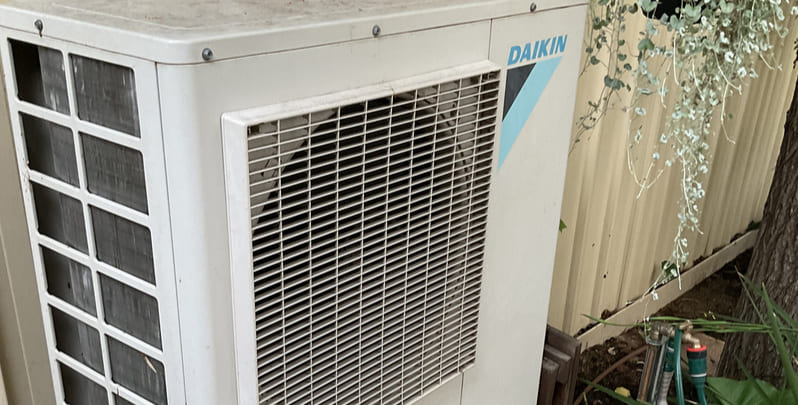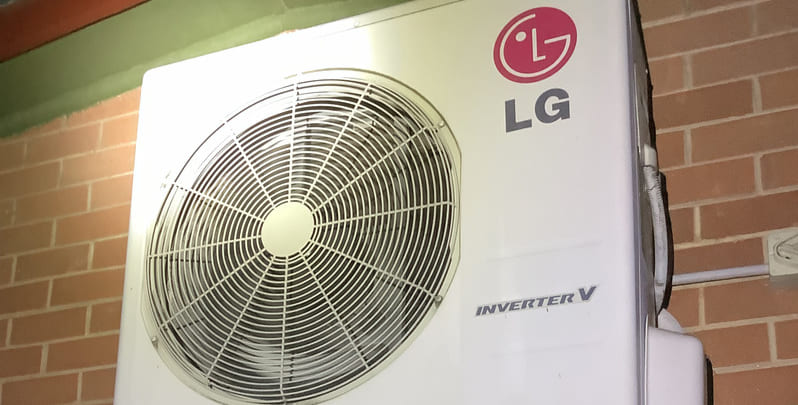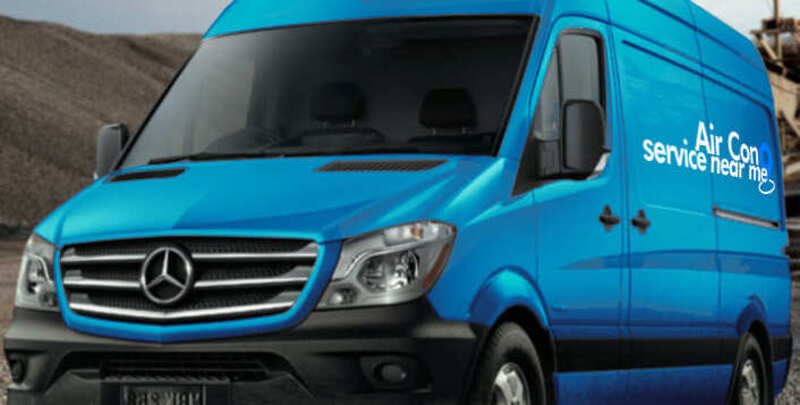Navigating the maze of home heating and cooling solutions can be daunting, but choosing the right reverse cycle air conditioner can make all the difference. Due largely to its ability to reverse the refrigeration cycle, this type of system will both cool your home in the sweltering summer months and warm it when the winter chill sets in. Of course, wading through the various available options in reverse cycle air conditioners becomes half the battle.
From the simplicity of a split system to the comprehensive coverage of a ducted model, or even the convenience of portable air conditioners, there are numerous options to consider. This blog will guide you through the essentials of selecting a system that best fits your needs, ensuring comfort and cost-efficiency season after season.
What is a Reverse Cycle Air Conditioner?
A reverse cycle air conditioner is a cooling and heating system equipped with a refrigeration cycle that can be reversed to either heat or cool a controlled space. This type of air conditioner typically features separate indoor and outdoor units, connected by pipes that facilitate refrigerant flow. The ability to reverse the cycle allows the system to absorb heat from the outdoor air to provide efficient heating during colder months and expel warm indoor air to offer cool air in warmer seasons.
Worthy Features and Benefits
Key to its operation is inverter technology, which optimises the cooling and heating output based on the room temperature. This results in energy-efficient operation and lower running costs. This technology adjusts the power used to maintain desired temperatures without increased power consumption, thereby reducing electricity costs significantly.
Moreover, many reverse cycle systems include features like air purifiers and filters that improve indoor air quality. They can remove impurities and allergens from the air, making them ideal for homes with high pollen counts or dust. With options ranging from sizable ducted systems to more compact split systems, these air conditioners can be professionally installed to suit different ceiling heights and room sizes. They adapt their performance to direct sunlight exposure and specific cooling needs.

Factors to Consider When Choosing A Reverse Cycle Air Conditioner
- Energy efficiency: One of the most crucial factors to consider when selecting a reverse cycle air conditioner is its energy efficiency. Look for units with a high-zoned energy rating label, which indicates more efficient operation and potential savings on electricity costs. Efficient units use less energy and also have a lower environmental impact.
- Size and capacity: The size of the air conditioner should be appropriate for the room or area where it will be installed. A size split system that is too small won’t effectively heat or cool the space, leading to increased energy use as the unit struggles to reach the desired temperature. Conversely, a system that’s too large for the space can cause rapid cycling, which also wastes energy.
- Cooling and heating efficiency: Check the unit’s specifications for both cooling efficiency and heating efficiency. A highly efficient model in either mode will provide the best year-round performance and comfort.
- Air purification features: Many modern air conditioners come with built-in air purifiers. These can greatly improve indoor air quality by filtering out pollutants, allergens, and other airborne irritants. This feature is particularly beneficial for those with allergies or respiratory issues.
- Professional installation: Not only are you legally required to have a licensed technician install your reverse cycle air conditioner, but doing so ensures optimal efficiency. You’ll also avoid common installation pitfalls such as incorrect placement or insufficient insulation. A properly installed unit will operate more effectively, with better airflow and cooling capacity.
- Additional features: Look for added features that enhance convenience and functionality, such as remote control operation, sleep mode, and smart features that enable greater control over temperature and energy consumption. These features can significantly enhance your comfort and the unit’s overall efficiency.
Types of Reverse Cycle Air Conditioners
As it happens, there are numerous types of reverse cycle air conditioners to choose from. Some may suit specific living environments better than others – small apartments compared to spacious homes for example – so choosing one that best meets your needs is wise.
Split System Air Conditioners
Split system air conditioners are one of the most common types of reverse cycle units. They consist of two main components: an indoor unit that releases cool or warm air into the room and an outdoor unit that expels heat. These systems are ideal for single rooms due to their efficiency in both heating and cooling individual spaces. They can be tailored to fit different ceiling heights and are known for their ability to save energy while providing effective temperature control.
Multi-split Systems
Similar to the standard split system, multi-split systems connect multiple indoor units to a single outdoor unit. This setup is perfect for homes or offices with limited space for outdoor units or where there is a need for individual control of the climate in different rooms. They provide more heating and cooling options without the need for additional external units.
Ducted Systems
Ducted systems are ideal for larger homes or commercial spaces that require a uniform heating and cooling solution across multiple rooms. These systems feature a central unit connected by ducts hidden in roof spaces. These ducts distribute conditioned air through vents located throughout the property. Ducted systems are valued for their discreet appearance and the ability to heat or cool large areas efficiently.
Portable Air Conditioners
Portable reverse cycle air conditioners are designed to heat and cool your room from a single unit. This makes them a versatile option for year-round temperature control in various settings. It can be especially beneficial in homes where installing a permanent system might not be feasible. They work by reversing the refrigeration cycle to switch between cooling and heating, depending on the need. It’s an option that provides efficient heating and cooling performance in a compact, movable format. One you can take from the living room in the middle of the day to the bedroom at night.

Installation Considerations
- Choosing the right location: The efficiency of a split system air conditioner or a ducted system greatly depends on where you install it. Consider placing the indoor unit in a location that avoids direct sunlight and delivers maximum air flow. For ducted systems, you must consider ceiling height and space to accommodate ducting. This will ensure an even distribution of air throughout the property.
- Professional installation: To ensure optimal performance of your heating and cooling system, you’ll need a licensed technician to install it professionally. They will assess your home’s layout. They’ll note how it absorbs heat and identifying where cooling is most needed, to effectively position units. For ducted systems, a professional must handle the setup. This is due to the complexity of integrating ducts and vents into building structures.
- Compliance and safety: Installation of any cooling appliances must comply with local building codes and safety standards. Proper installation ensures that the reverse cycle split or ducted heating system operates efficiently, safely, and up to the manufacturer’s specifications, thereby prolonging the life of the unit.
Maintenance Tips for Your Reverse Cycle Air Conditioner
- Regular cleaning: Keeping the filters clean is essential for maintaining the efficiency of your reverse cycle air conditioner. Dust and debris can obstruct airflow and reduce the system’s efficiency, leading to higher energy costs and reduced cooling or heating performance. Check and clean filters every three months, or more frequently in high-use periods.
- Professional servicing: To ensure that your air conditioning system operates at its optimal level, schedule a professional service at least once a year. Technicians can check for issues such as refrigerant leaks, worn out components, and ensure that all parts of the system are functioning correctly. This preventative maintenance helps avoid costly repairs and extends the life of the unit.
- Inspect and clear external components: Be sure to regularly check the outdoor unit of your air conditioner. Ensure that it is free from leaves, dirt, and other debris that can block vents and reduce its ability to absorb and expel heat efficiently. Keeping the area around the outdoor unit clear will enhance its performance and durability.
Choose the Right Reverse Cycle Air Conditioner for You!
Choosing the right reverse cycle air conditioning system requires consideration several factors. These include energy efficiency, size and capacity, and the specific types available, such as split or ducted systems.
Investing in the right air conditioner can provide significant energy savings, better indoor air quality, and increased comfort throughout the year. By selecting a system tailored to your needs and ensuring it is professionally installed and regularly maintained, you can maximise these benefits and reduce overall running costs.
Consider your individual needs and the specific requirements of your space when selecting a reverse cycle air conditioner. Don’t hesitate to consult with professionals to help guide your decision. We’ll help you choose the most efficient and suitable system for your home.
Please note: This information is provided for advice purposes only. Regulations differ from state to state, so please consult your local authorities or an industry professional before proceeding with any work. See our Terms & Conditions here.

